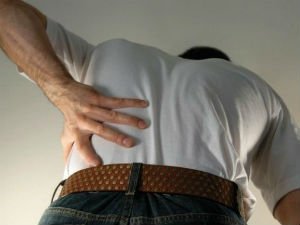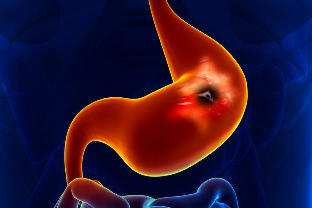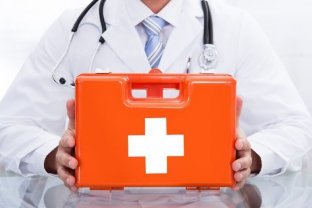When you get a pain in the back of the left, many people begin to suspect disease of the vertebral column. But not only the pathology of the spine can cause unpleasant symptoms. Almost 95% of the people, after 35 years of age, you begin to experience pain in the back area.

There are many reasons that could be: the malfunctioning of the internal organs, colds, hypothermia, sedentary lifestyle, poor posture and that of many others. Is not worth begin to perform healing interventions, if there is pain in the left side of the back. Only the competent expert true recognizes the condition and will prescribe treatment. Meanwhile, it is worth considering the possible causes of the onset of the disease.
The cause of the discomfort
Before you begin the treatment, you must find out the cause of the pain, you install the exact location, the time. It may be that the cause was the over-tension of muscles as a result of strong physical activity or hypothermia. These are the main pathologies they suffer from back pain on the left side.
Intercostal neuralgia
Pain syndrome that occurs when compression, irritation or inflammation of the nerves between the ribs. The causes of the disease, are many. The main of them are: allergic reaction, nervous system disorders, reduction of immune forces of the body, the tumor in the lung or pleura, hypothermia, certain infectious diseases (tuberculosis, herpes), injury in the back and on the chest, disease of the spine (scoliosis, intervertebral hernia, etc). When it attacks the nerves of the left side hurts the left side of the chest, the increase in the movement or breathing, are observed increase of the sweating, the tears, the goosebumps on the skin, numbness of the affected areas, the sleep disorder.
The pyelonephritis
The kidney disease, which is due to a lesion of the parenchyma, cups and the pelvis of the kidney. In the majority of cases of pyelonephritis develops due to the presence of infectious agents in the bladder, which is raised by the urteres. Also the development of the pathology contribute and other diseases: urolithiasis, diabetes mellitus, diseases of the organs of the female reproductive system, etc
Symptoms of kidney disease are the pain in the lumbar area with the damaged tissue of the part that gives in the area lobka, general weakness and discomfort, increase of the temperature with the increase of the sweating, the urine becomes turbid, and acquires a reddish hue, in the analysis of urine is promoted, the protein content and the bacteria in the blood, increased esr and leukocytosis.
Urolithiasis
A disease in which the organs of the urinary system solid education in the form of stones. These stones are not that other, as the crystals of the salts dissolved in the urine. At the onset of the disease makes the presence of a number of reasons: hereditary predisposition, consumption of water that contains a large amount of mineral salts, lack of liquid intake, physical inactivity. Depending on the location of the pain, the doctor can identify where is the stone.
Confirm this using done by the TIES of the research. In addition to pain in the back, patients experience pain and burning sensation in the lower abdomen above the pubis, and the urethra, the increase in body temperature, renal colic, increased the turbidity of the urine mixed with blood.
The myocardial infarction
The form of the ischemic heart disease, which is characterized by the necrosis of the heart muscle due to a lack of blood supply. Often the disease is common among men over the age of 45 years. The causes of an infarct may be diabetes, obesity, high blood pressure, excessive alcohol consumption, smoking, of the nerves and mental tension.
Acute stress of the surge can be the cause of a heart attack in the middle of the coronary heart disease and angina. The clinical manifestations include burning and acute pain in the heart area, which can radiate to the left arm, the jaw, the paddle, area. In addition to this, it appears the shortness of breath, cold and sticky sweat, the feeling of lack of air and the feeling of fear of death, acrocyanosis .
Stomach ulcer

A chronic disease that is characterized by the appearance of ulcers in the mucosa of the stomach. Pathology tends to frequent the recurrence, the progression and the occurrence of various complications. Develops a stomach ulcer for several reasons: previous diseases of the digestive system, the impact of bile and hydrochloric acid, the long-term use of nonsteroidal anti-inflammatory drugs, gastric mucosal ischemia of the fabric.
It has been shown that inheritance plays a role which is quite large and there are cases of morbidity among a nexus of kinship. For peptic ulcer disease is characterized by the presence of pain in the upper abdomen (under the xiphoid appendix), sometimes you can give back or in the upper quadrant. Normally, patients can be equipped with indicate the place of localization of bad symptom. In addition to pain, patients complain of a feeling of heaviness, filling the stomach on an empty stomach or after eating, a disorder of the chair, nausea, vomiting, which leads to the elimination of the bad of the signs and aches.
Pneumothorax
Pathological state in which there is accumulation of gas or air in the pleural cavity. Its causes are diseases of the respiratory system, injuries, malignancies, connective tissue diseases, tuberculosis, etc, it is most common among people between 20 to 40 years.
Develops a pneumothorax always suddenly and the severity of the symptoms depends on the degree of collapse of the lung. The main signs of the disease are considered: a sharp pain in the upper part of the rib cage with the damaged tissue of the part that is reinforced to inspire and can give the hand, dry cough, shortness of breath, cyanosis, the skin, the cold sticky sweat, decreased blood pressure, and sometimes fainting. When the shape of the neumotrax you can see the blood from the wound.
Pulmonary tuberculosis
Serious infectious disease that attacks the lung tissue. Pulmonary tuberculosis the most common form of the disease. The cause of the disease is the bacillus of koch. Causing factors for their breeding are the adverse conditions and some diseases that weaken the immune system: smoking, hiv infection, drugs, diabetes mellitus, cancer, chronic renal failure, and other.
Also the group of risk are people in places of deprivation of liberty, migrants, drug addicts and alcoholics. At the beginning of the development of the disease does not have symptoms or they are mild and pass as the common cold. The cough does not appear or appears rarely with othozhdeniem of sputum viscous, has a bad odor, back pain to the left or to the right of the defeat of lung with one of the parties. Also the patients complain of increased fatigue, sweating, low fever, swollen lymph glands, heart palpitations, sometimes hemoptysis.
Women have a cyst on the left ovary
Neoplasm benign, which has the liquid contents in the inner and the growth trend. The appearance of cysts related to the violation of the menstruation, disorders of the endocrine system and the wrong way of life. Pathology does not depend on the age. The principle growth of any mode does not manifest itself. The only symptom may be pulling pain in the lower part of the abdomen.
When it is necessary to extraordinary of the advice of a doctor
If it hurts the left part of the back and the pain does not cease, then, after a few days, it is worthwhile to suspect a serious condition that requires immediate medical attention.
It is not worth leave without attention and the appearance of other clinical signs:
- sudden and severe pain in the abdomen;
- nothing a loss of body mass;
- the malfunction of the digestive system and the urinary system;
- weakness, increased body temperature.
The essential detection

To diagnose the disease, should undergo a thorough examination. The doctor can assign the following types of research: the blood of the clinical and biochemical analysis, urine analysis, electrocardiogram, ultrasound, x-ray or fluorography, if necessary, magnetic resonance imaging, and computed tomography scan, blood and other biological materials in the markers.

























